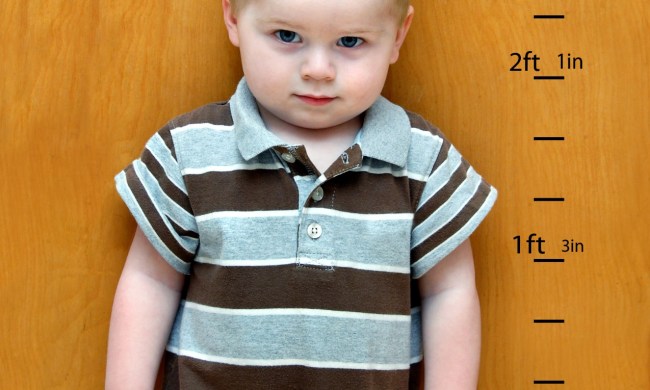
Positive reinforcement is not a new concept of behavioral modification. Behavioral psychologist B.F. Skinner introduced the concept in the 1930s through a series of experiments. Educators are familiar with positive reinforcement since it is frequently used in the classroom to help students experiencing behavioral issues. The idea is to reward children for positive behaviors like sharing, following directions, and completing work on time, while eliminating troublesome behaviors, such as hitting, spitting, and not following directions.
This concept isn’t just for the classroom, though. Gentle or positive parenting uses positive reinforcement to encourage children to make better choices and learn from their mistakes. If you’re looking to help your children make better choices, rewarding them for positive behaviors is a great way to do it. Let’s take a look a positive reinforcement examples to understand how this behavioral modification works and the benefits of adding it to your parenting toolbox.
What are the benefits of positive reinforcement?

Positive reinforcement, simply defined, is using favorable rewards to encourage children to engage in desired behaviors. Think about it as catching your kiddos doing something good instead of always being on the lookout for what they don’t do.
The idea is that as children see they get praise or rewards for doing things like putting toys away or doing homework without being told, they will be motivated to repeat the desired behaviors. Positive reinforcement takes the focus away from the negative and puts the emphasis on the constructive things children do. Pluses to using positive reinforcement include building self-esteem and self-confidence, as well as strengthening the parent/child relationship.
Positive reinforcement examples

Incorporating positive reinforcement into your parenting wheelhouse isn’t as complicated as you may think. It also doesn’t involve having a treasure chest of toys or sweets as rewards for doing something good. Positive reinforcement examples include hugs, high-fives, clapping, a thumbs-up, and words of praise.
The key to positive reinforcement is rewarding the behavior when you see it. For example, give your kiddo a hug or a high-five for finishing homework during the designated time. Don’t tell your child after dinner and soccer practice that you are happy homework was already completed. Positive reinforcement is more impactful when the desired behavior is recognized soon after.
Positive reinforcement examples are all about acknowledging favorable behaviors. Rewards can also be more concrete, like a fun activity. If your kiddo was on target with homework and completing chores, a positive reward could be extra video game time or going outside to play a game as a family.
Another example of positive reinforcement is a reward system, like in a classroom, where a sticker chart or tokens motivate kids to work toward a larger reward. A teacher may put marbles in a jar every time the class does something positive. When the jar is filled, the class gets to watch a movie, or the teacher joins them for recess. The same concept can be applied at home. Just remember to give the token or sticker when you observe positive behaviors or the behavior you are trying to modify.
Rewarding effort

Encouragement, compassion, and boundaries are all components of positive reinforcement. Kids need structure and setting limits is how children learn. Of course, your child may not always do a chore completely or to your satisfaction. With positive reinforcement, you focus on the effort and what they did instead of what wasn’t done. For example, if your kiddo puts the laundry away, but forgets to pick up the dirty clothes off the floor, praise the completed chore. Then, give a gentle reminder to place dirty clothing in the hamper. Hopefully, next time, your child will remember to do both.
It’s also important not to wait too long before handing out positive reinforcement. If getting dressed is hard for your child, don’t wait until the shoes are on before recognizing the effort with words of encouragement. Positive reinforcement encourages kids to keep trying even when something is frustrating or difficult.
What behaviors should be positively reinforced?

Being a parent is a full-time job and not the only one you have. Life is busy enough without trying to reward your child for every little thing they accomplish during the day. Remember, positive reinforcement is a parenting tool to help you encourage desired behaviors or modify undesirable ones. For example, if homework is the worst time of the day in your house, using positive reinforcement is a way to change that. Other behaviors to positively reinforce are:
- Being a good sport on the field and off
- Taking turns
- Waiting
- Sharing
- Playing nicely with siblings
- Remembering manners
- Being flexible
- Being on time
- Not having meltdowns
When you’re using positive reinforcement, be careful you’re not rewarding negative ones. Negative attention, such as yelling, is rewarding because kids will have succeeded in getting a reaction. Giving in after you’ve already said no is another form of negative reinforcement.
When using positive reinforcement from the parenting toolkit, it’s important to remember consistency. If you only positively reward a behavior you’re trying to change, like using manners some of the time, your kiddo will not be motivated to remember to use them. Positive reinforcement is a tried-and-true behavioral modification method that works in the classroom and can be successful at home, too.



